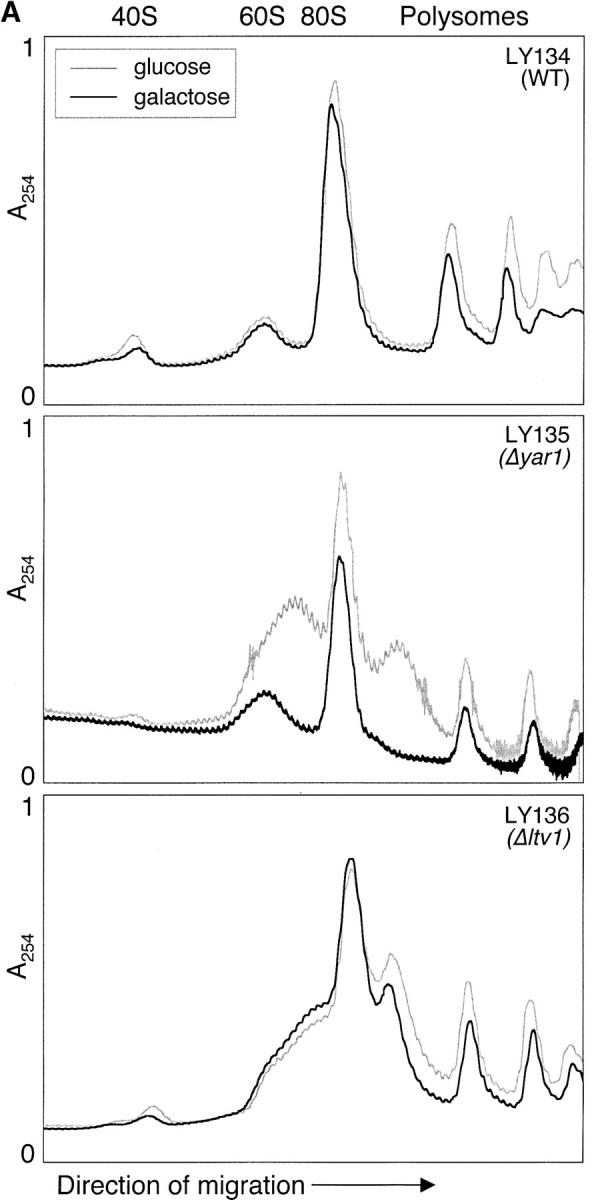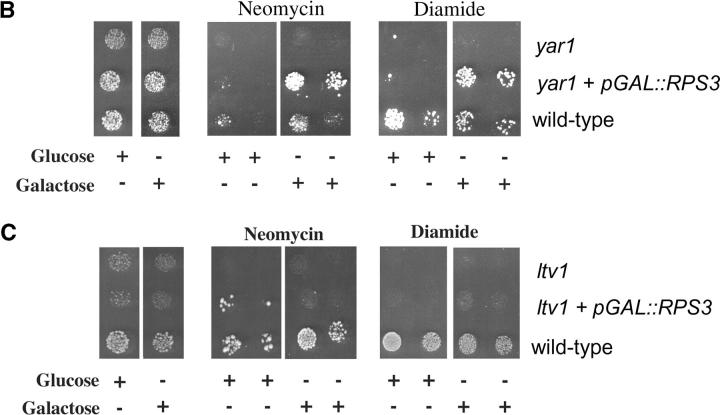Figure 8.—

Overexpression of RPS3 suppresses the phenotypes of Δyar1 mutants. (A) Wild-type (LY134) cells transformed with pRS316 (Sikorski and Hieter 1989) and Δyar1 (LY135) and Δltv1 (LY136) cells transformed with pGAL:RPS3 were grown overnight at 30° in selective media including glucose and harvested by centrifugation. Half of the cells were resuspended in the same media, and half were resuspended in selective media including galactose. After a 7-hr incubation at 30°, cells were fractionated and the homogenate was centrifuged on continuous sucrose gradients, as described in Figure 6. The portion of the gradient containing small subunits (40S), large subunits (60S), monomer ribosomes (80S), and small polysomes is shown. Shaded lines indicate the glucose-grown samples, and solid lines indicate galactose-grown samples. (B) Δyar1 (LY135) cells transformed with pGAL:RPS3 or with pRS316 and wild-type (LY134) cells transformed with pRS316 were grown in selective medium to early log phase (OD660 0.2–0.7). Equal numbers of each strain were plated in fourfold dilutions (left to right) on selective plates containing either glucose or galactose and neomycin (5 mg/ml) or diamide (1 mm). Plates were grown at 30° for 2–5 days and photographed. (C) Cells were grown and diluted as described in B except that Δltv1 (LY136) cells transformed with pGAL:RPS3 or pRS316 were used instead of Δyar1 cells.

